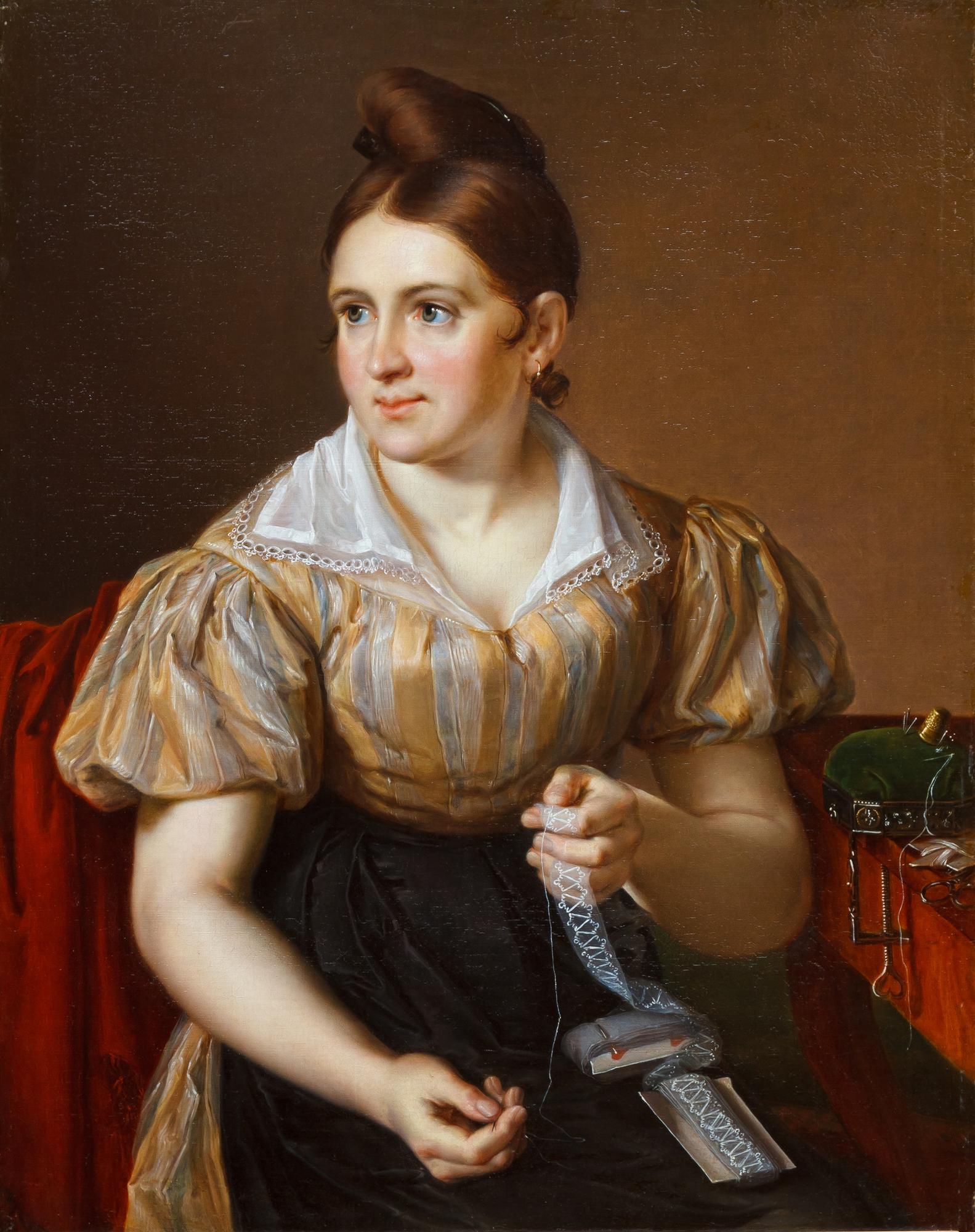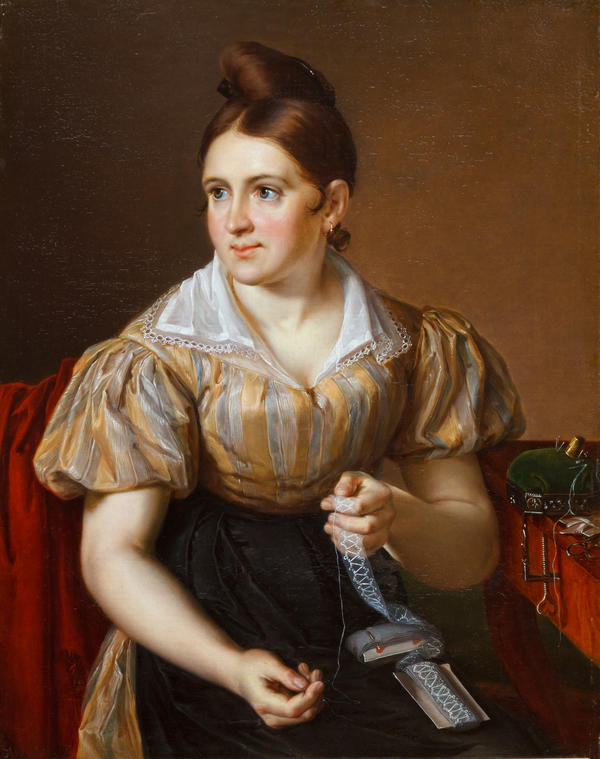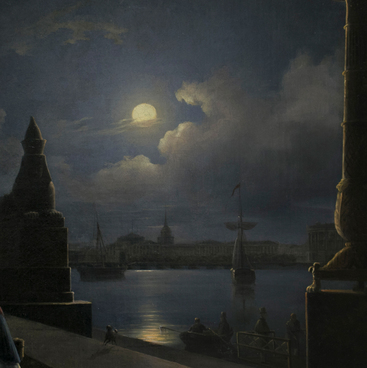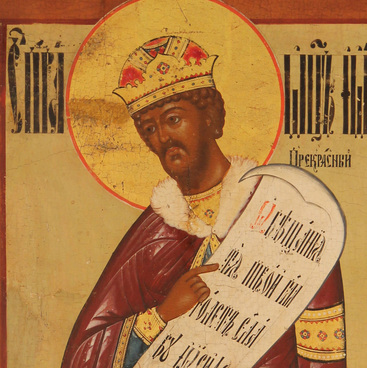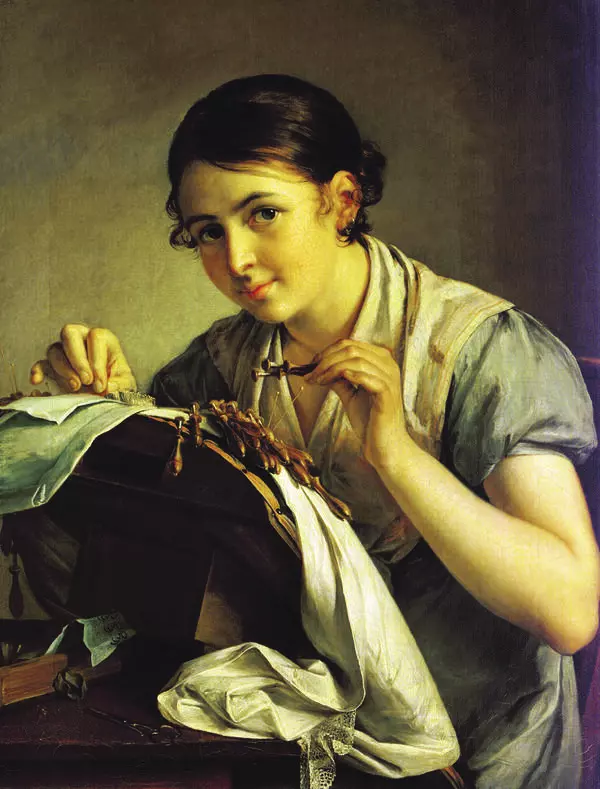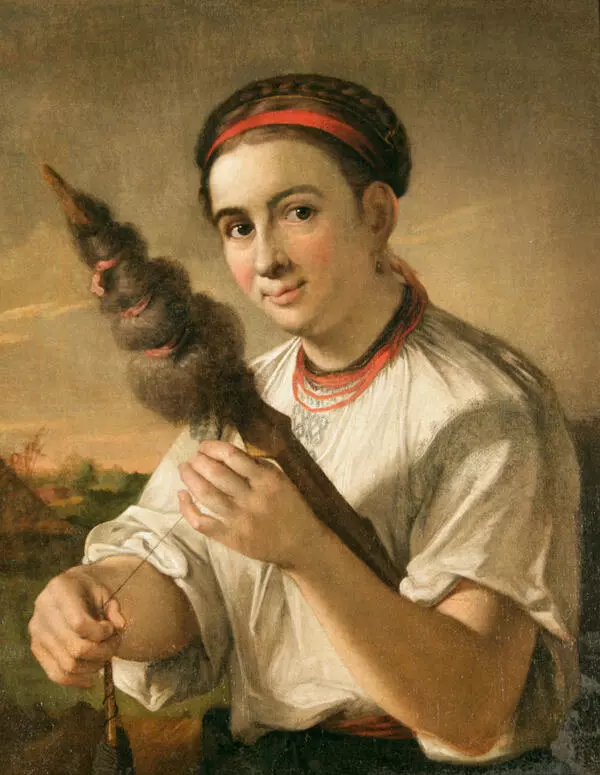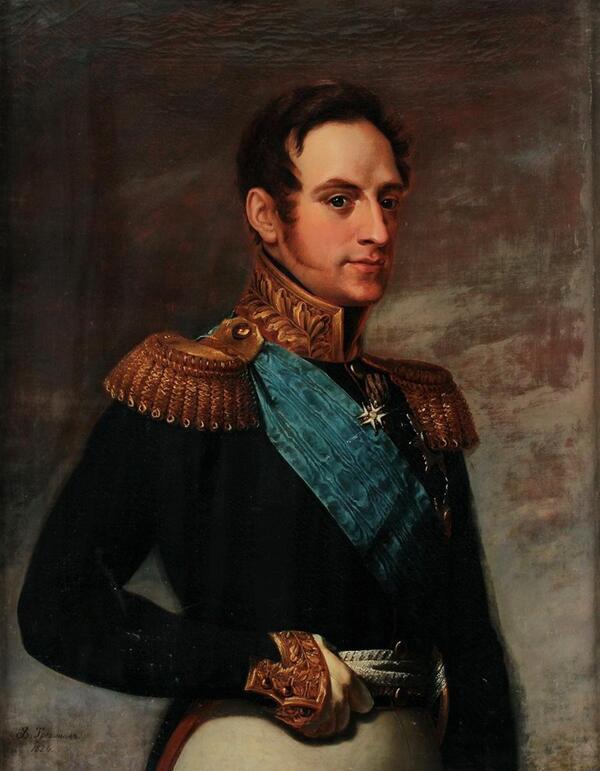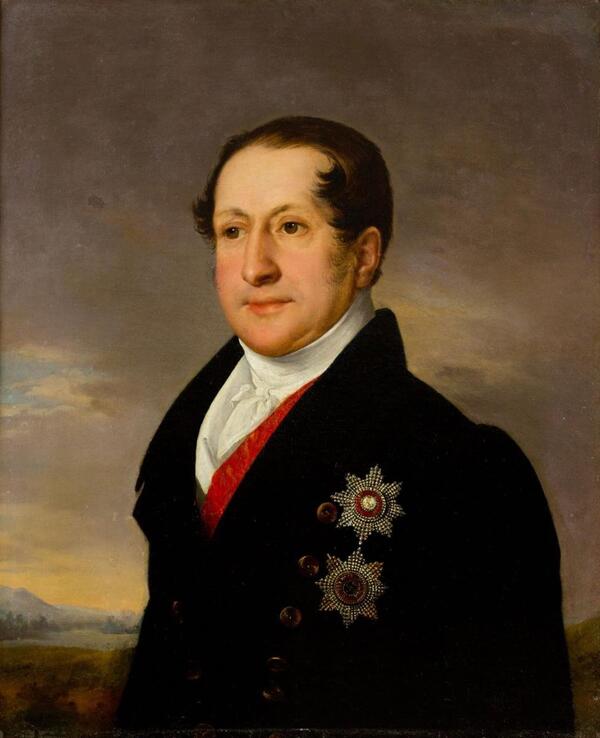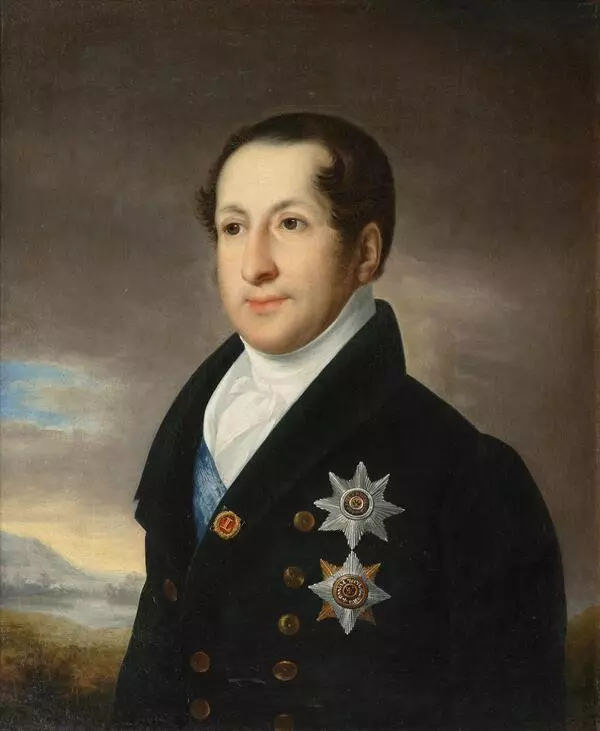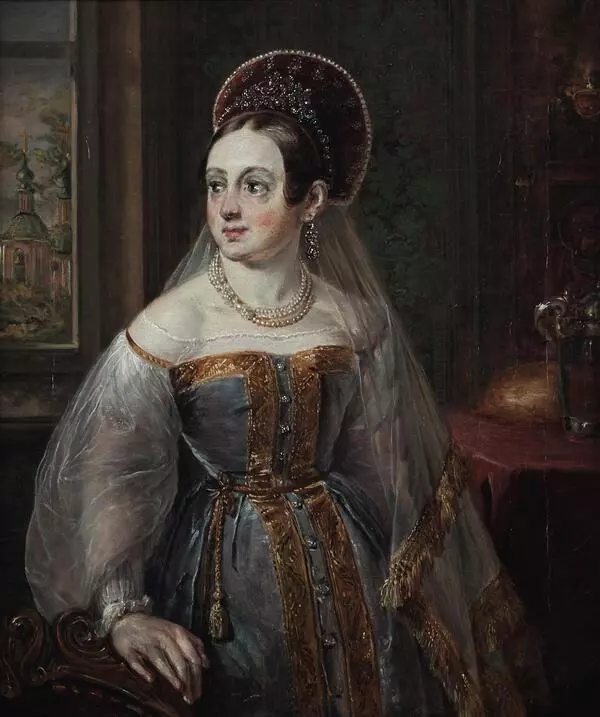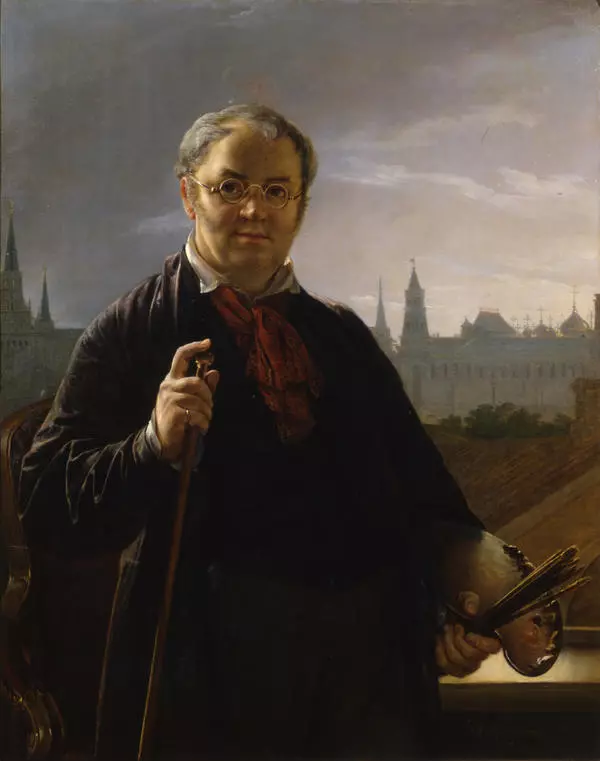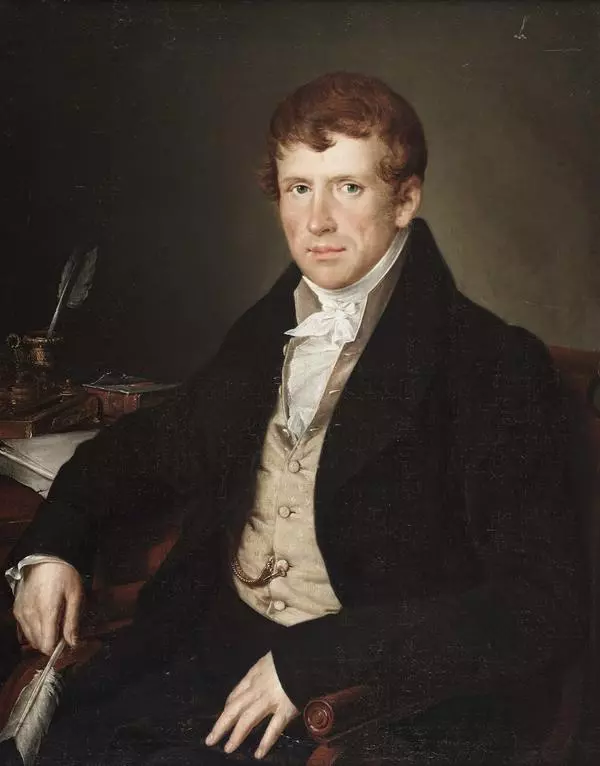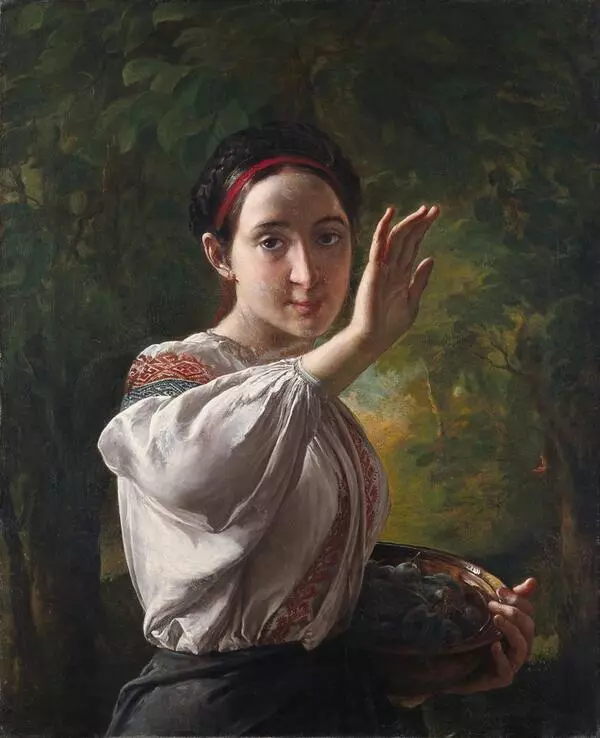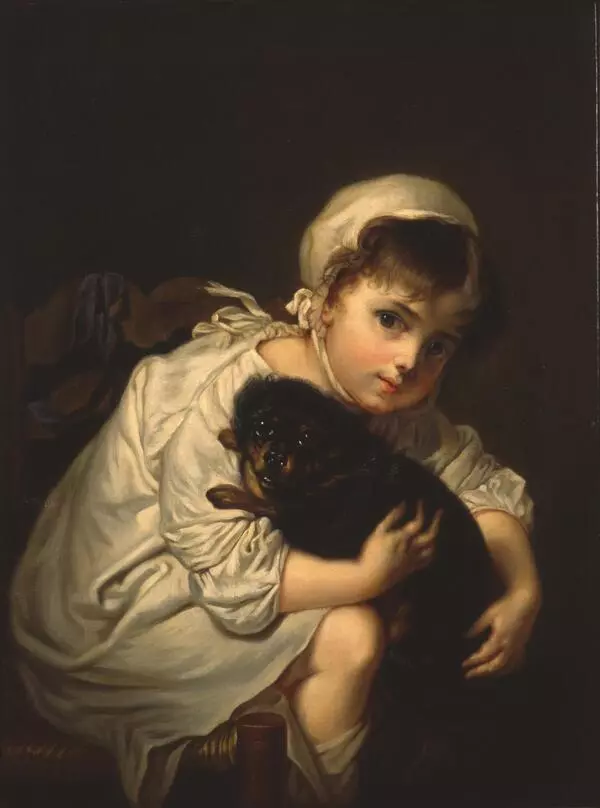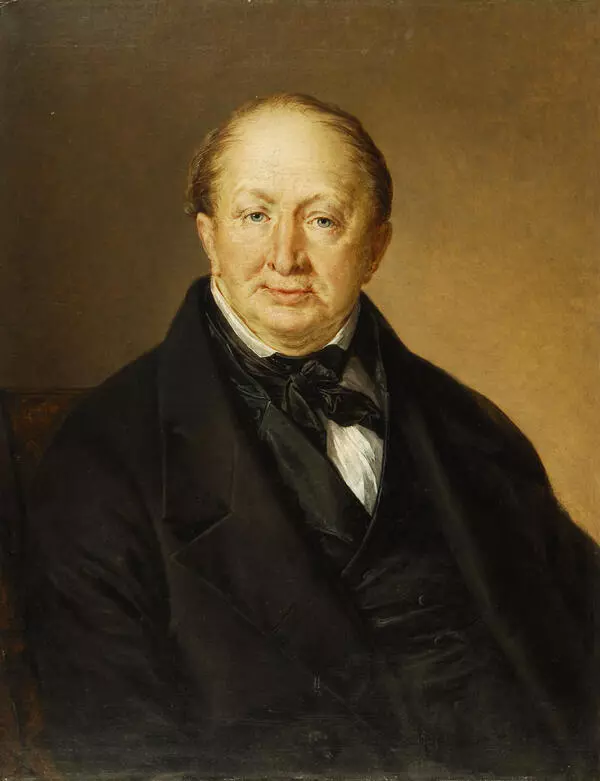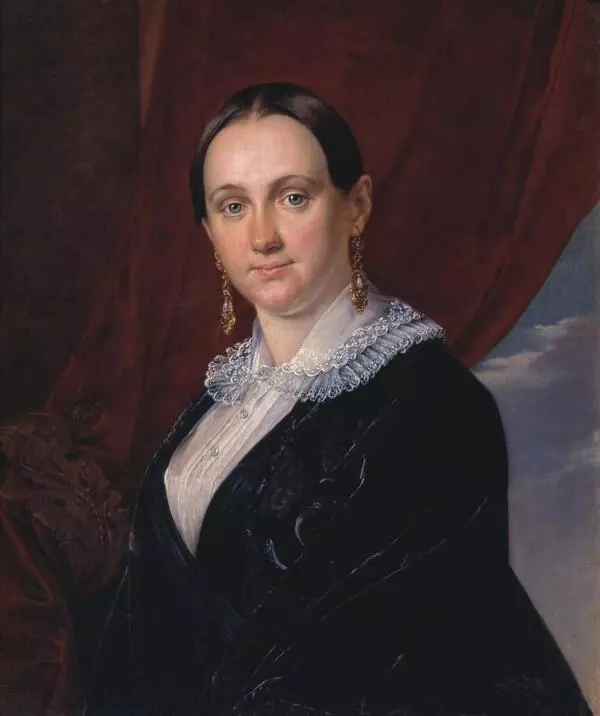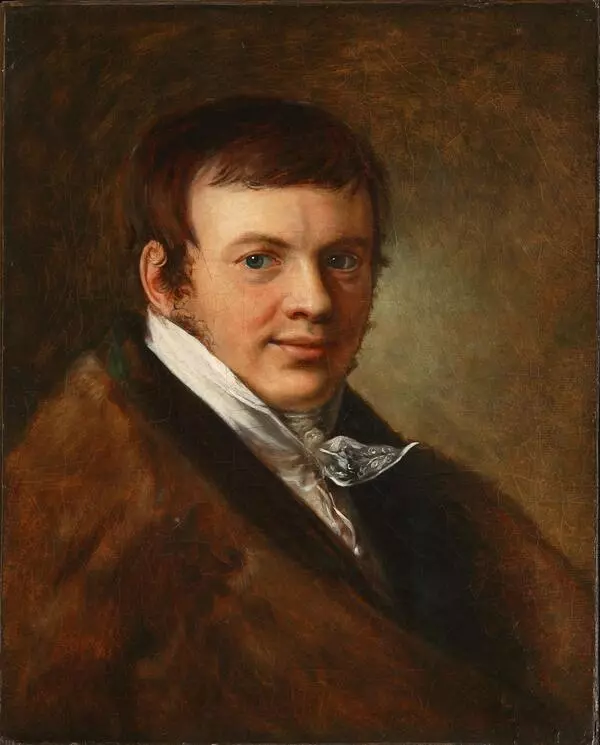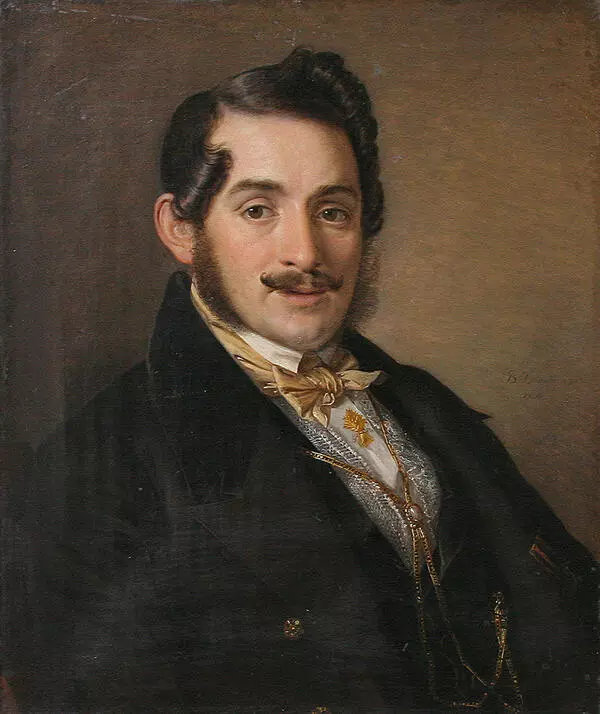Vassily Tropinin rose to fame as a skillful renderer of female images with his famous series of paintings depicting needlework handywomen, such as The Lace Maker (1823), The Gold-Embroideress (1825), The Lady with Insertion Lace (the 1830s), etc. One variant of the latter painting, made by Tropinin himself, is kept at the Khanty-Mansiysk State Museum of Fine Arts.
The woman at work in Tropinin’s picture represents rather a genre painting than a portrait of a particular individual. In the canvas, we see a large-eyed and ruddy-cheeked young girl with dark brown hair piled high on her head. The sitter’s clothes are quite modest. She is wearing a short-sleeved beige dress with gray stripes and a turnback collar, with a dark apron over the skirt. She is holding a needle and a ribbon of translucent insertion lace in her hands, with two other lace rolls wound around playing cards lying in her lap.
Tropinin introduced elements of still-life in this portrait: a needle cushion fixed to the edge of the table, a delicately outlined silver thimble, and scissors. Tropinin achieved realistic rendering of metals using a solid texture of the paint layer and glazing, i.e. a special technique of putting a thin transparent or semi-transparent layer. The canvas The Lady with Insertion Lace belonged to a private individual for a long time, and was part of the permanent display at the Vassily Tropinin Memorial House-Museum in Moscow.
Vassily Tropinin was a Russian painter, a master of romantic and realistic portrait. He was born and raised in the Novgorod Governorate, in the family of a bonded peasant. He studied at an ordinary school for the countryfolk. His artistic skills manifested themselves at a very early age. However, Count Morkov thought it would be more appropriate to send Vassily Tropinin to a college where he would study the trade of a confectioner.
In Saint Petersburg, Tropinin secretly attended free drawing lessons in the Imperial Academy of Arts. At an exhibition held by the Academy, his work caught the eye of Empress Elizabeth, the wife of Alexander I. Count Morkov decided to take Vassily from the Academy and sent him far away from Saint Petersburg to a remote estate where the young man was to do some menial chores. Quite soon, Tropinin became the count’s personal painter, and during the Patriotic War of 1812, he returned to Moscow together with his owner. In 1823, when he was 47, he received a letter of enfranchisement from the count and, thanks to diligence and hard work, became an academician of portraiture a year later.
Vassily Tropinin’s works produced a significant influence on the oeuvre of many Russian painters. Today, his pictures are part of collections of the Tretyakov Gallery, State Russian Museum and many other museums and picture galleries across Russia.
The woman at work in Tropinin’s picture represents rather a genre painting than a portrait of a particular individual. In the canvas, we see a large-eyed and ruddy-cheeked young girl with dark brown hair piled high on her head. The sitter’s clothes are quite modest. She is wearing a short-sleeved beige dress with gray stripes and a turnback collar, with a dark apron over the skirt. She is holding a needle and a ribbon of translucent insertion lace in her hands, with two other lace rolls wound around playing cards lying in her lap.
Tropinin introduced elements of still-life in this portrait: a needle cushion fixed to the edge of the table, a delicately outlined silver thimble, and scissors. Tropinin achieved realistic rendering of metals using a solid texture of the paint layer and glazing, i.e. a special technique of putting a thin transparent or semi-transparent layer. The canvas The Lady with Insertion Lace belonged to a private individual for a long time, and was part of the permanent display at the Vassily Tropinin Memorial House-Museum in Moscow.
Vassily Tropinin was a Russian painter, a master of romantic and realistic portrait. He was born and raised in the Novgorod Governorate, in the family of a bonded peasant. He studied at an ordinary school for the countryfolk. His artistic skills manifested themselves at a very early age. However, Count Morkov thought it would be more appropriate to send Vassily Tropinin to a college where he would study the trade of a confectioner.
In Saint Petersburg, Tropinin secretly attended free drawing lessons in the Imperial Academy of Arts. At an exhibition held by the Academy, his work caught the eye of Empress Elizabeth, the wife of Alexander I. Count Morkov decided to take Vassily from the Academy and sent him far away from Saint Petersburg to a remote estate where the young man was to do some menial chores. Quite soon, Tropinin became the count’s personal painter, and during the Patriotic War of 1812, he returned to Moscow together with his owner. In 1823, when he was 47, he received a letter of enfranchisement from the count and, thanks to diligence and hard work, became an academician of portraiture a year later.
Vassily Tropinin’s works produced a significant influence on the oeuvre of many Russian painters. Today, his pictures are part of collections of the Tretyakov Gallery, State Russian Museum and many other museums and picture galleries across Russia.
